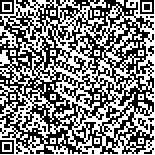| 邢如月,李梦梦,张国伟,等.阿美替尼治疗EGFR突变晚期非小细胞肺癌疗效及安全性分析[J].肿瘤学杂志,2022,28(6):472-478. |
| 阿美替尼治疗EGFR突变晚期非小细胞肺癌疗效及安全性分析 |
| Efficacy and Safety of Almonertinib for Patients with EGFR-mutant Non-small Cell Lung Cancer |
| 投稿时间:2022-02-07 |
| DOI:10.11735/j.issn.1671-170X.2022.06.B006 |
|
 |
| 中文关键词: 非小细胞肺癌 阿美替尼 表皮生长因子受体 T790M |
| 英文关键词:non-small cell lung cancer almonertinib epidermal growth factor receptor T790M |
| 基金项目: |
|
| 摘要点击次数: 1005 |
| 全文下载次数: 381 |
| 中文摘要: |
| 摘 要:[目的] 评价阿美替尼在真实世界中治疗晚期非小细胞肺癌NSCLC患者的疗效与安全性。[方法] 回顾性分析河南省肿瘤医院于2020年4月至2021年4月收治的100例接受阿美替尼治疗的EGFR突变晚期NSCLC患者的临床资料,采用Kaplan-Meier生存曲线分析无进展生存期(progression free survival,PFS)和总生存期(overall survival,OS),采用Cox回归模型进行多因素分析和预后因素评估。[结果] 一线接受阿美替尼治疗患者(n=45)的客观缓解率(objective response rate,ORR)为71%,中位PFS为16.7个月,中位OS未达到。 既往第一、二代EGFR-TKI治疗进展后接受阿美替尼治疗的患者(n=55)中,T790M(+)患者(n=12)的ORR为50.0%,mPFS为11.9个月,中位OS未达到;T790M(-)患者(n=35)的ORR为25.6%,中位PFS为10.8个月,中位OS未达到,差异均无统计学意义(P均>0.05)。患者出现的不良反应主要为肌酸激酶升高(28%)、皮疹(12%)、肝功能损伤(8%)、皮肤瘙痒(8%)、白细胞降低(7%)、贫血(6%)、腹泻(6%)和口腔炎(3%),其中3级及以上不良反应发生率仅2%,均集中在血液学毒性。多因素Cox回归分析显示,肌酸激酶升高是中位PFS延长的重要预测因素(HR=0.176,P=0.001)。[结论] 阿美替尼在EGFR突变NSCLC脑转移患者中表现出良好的疗效和安全性。既往EGFR-TKI进展后T790M(-)的患者如果拒绝化疗或化疗疗效较差,可以考虑将阿美替尼作为后续治疗选择之一。肌酸激酶升高是接受阿美替尼治疗的患者中位PFS延长的重要预测因素。 |
| 英文摘要: |
| Abstract:[Objective] To evaluate the efficacy and safety of almonertinib for patients with EGFR-mutant non-small cell lung cancer(NSCLC). [Methods] The clinical data of 100 patients with EGFR-mutant advanced NSCLC treated with almonertinib in Henan Cancer Hospital from April 2020 to April 2021 were analyzed retrospectively. The progression free survival(PFS) and overall survival(OS) were analyzed by Kaplan-Meier survival curve, and the prognostic factors were analyzed by Cox regression model. [Results] The objective response rate(ORR) and median PFS of patients receiving first-line almonertinib treatment(n=45) were 71% and 16.7 months, respectively; while the median OS was not achieved. Among patients who received almonertinib after progression on prior EGFR-TKI therapy(n=55), in T790M(+) patients(n=12) , the ORR was 50.0%, median PFS was 11.9 months, and median OS was not reached;while in T790M(-) patients(n=35), the ORR was 25.6%, median PFS was 10.8 months, and median OS was still not reached. There was no significant difference in the efficacy between T790M(+) and T790M(-) groups. The main adverse reactions were elevated creatine kinase(28%), erythra(12%), liver function damage(8%), skin pruritus(8%), leucopenia(7%), anemia(6%), diarrhea(6%) and stomatitis(3%), the incidence of grade≥3 adverse reactions was 2%(2 cases of hematological toxicity). The multivariate Cox regression analysis revealed that elevated creatine kinase(HR=0.176, P=0.001) was an independent predictive factor for longer median PFS. [Conclusion] Almonertinib shows a good efficacy and safety in EGFR-mutant NSCLC patients with brain metastasis. For T790M(-) patients with progression after previous EGFR-TKI, if they refuse chemotherapy or the curative effect of chemotherapy is poor, almonertinib can considered as a treatment option. Elevated creatine kinase is a predictor of prolonged PFS in patients treated with almonertinib. |
|
在线阅读
查看全文 查看/发表评论 下载PDF阅读器 |